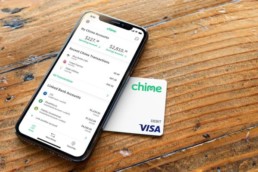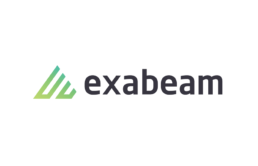Forbes Self-Made Women 2018: Aspect Ventures' Theresia Gouw shares her experience
(Watch the interview on Forbes)
Innovation is our 'bread and butter,' says Aspect Ventures’ Jennifer Fonstad
Jennifer Fonstad, Aspect Ventures, discusses White House trade policies as fears grow about foreign tech investing and protecting intellectual property.
(Watch the discussion).
No-fees mobile bank Chime raises $70M Series C, valuing its business at $500M
Chime, the San Francisco-based challenger bank known for its consumer-friendly features and lack of fees, has raised $70 million in Series C financing, led by Menlo Ventures. The round, which also included existing investors Forerunner Ventures, Aspect Ventures, Cathay Innovation, Northwestern Mutual, Crosslink Capital, and Omidyar Network, brings the company to over $100 million in total funding to date and values the business at around $500 million.
(Read on TechCrunch)
The startup is one of several challenger banks gaining popularity with a younger, millennial audience who sees no need for a bank with physical branches, and who are sick of being penalized by hefty fees for things like overdrafts or dropping below a minimum balance – fees that take advantage of consumers at their most vulnerable points in their financial lives.
As Chime points out, traditional banks charged consumers over $34 billion in fees in 2017. Its service, on the other hand, drops the consumer-facing fees.
There are no monthly fees, no minimum balance fees, no overdraft fees, no international transactions fees, and it has a network of nearly 40,000 free ATMs Instead of gouging customers, Chime generates revenue from an interchange-based business model involving its accompanying debit card, where it earns about 1.5 percent in interchange revenue from Visa.
While the no-fee structure is a huge draw for consumers, Chime is popular also for its innovative feature set. Thanks to a founding team with a combination of both startup and finance experience, the app looks like something built by a technology company, not an old-fashioned bank.
Chime’s co-founder and CEO Chris Brittpreviously worked at Flycast, was an early comScore employee, and did time at Visa and Green Dot; co-founder and CTO Ryan King hails from Plaxo and Comcast.
“I started this company because Green Dot was really focused on the unbanked and under-banked people who couldn’t get bank accounts because they had bad credit or bad checks – that sort of thing,” explains Britt. “It was really not a full-featured bank account. And so what I wanted to do with this company was create a product that would serve more mainstream consumers – people who actually had accounts at [Bank of America] and Wells Fargo, but just aren’t particularly satisfied with those guys for variety of reasons – probably first, and foremost, the way they structure the products are quite punitive,” he says.
Chime launched to consumers in mid-2014, but didn’t offer the suite of features that would allow people to use Chime as a primary bank account until early 2016, Britt says.
Today, that feature set includes an automatic savings option that will round up purchases, and one that socks away 10 percent of your paycheck into your Chime savings account. It also has a popular no-fee paycheck advance feature that will make your direct deposited paycheck available to you early – as soon as the deposit is initiated by the payroll provider and the bank is alerted.
This feature set and no-fee structure has attracted a number of young professionals from all over the U.S. to switch. The company passed over a million accounts a couple of weeks ago, and is now adding well over 100,000 new bank accounts per month. It has also generated over $4.5 billion in transaction volume to date, and expects to reach $10 billion by year-end.
With the additional funding, Chime plans to scale the business further, not only with marketing and new hires to expand its nearly 80-person team in San Francisco to over 100, but also in the types of products it will offer and other new features.
“We think the next phase for us is going to be helping our members manage their credit and loans more effectively,” says Britt. “We think we can play a role in providing short-term lines of credit and helping members manage their debt.” However, he declined to share product details on that front.
Chime also has some deals in the works which will see the bank working with employers more directly, but couldn’t speak to the specifics at this time.
Along with the new round, Chime has added Shawn Carolan of Menlo Ventures to its board.
“The bank account is at the center of our lives, critical to both financial and emotional well-being,” Carolan said, speaking to Menlo’s investment. “We love how Chime’s business growth aligns with helping more members save more money for themselves rather than being gouged by hidden bank fees. This business model shift in financial services is inevitable and Chime is leading the way,” he added.
Healthcare Startup Solv Raises $16.8 Million To Build The OpenTable For Urgent Care
When OpenTable launched, it didn’t invent the restaurant reservation, but it made it easier than ever to book a last-minute table for dinner online. But restaurants are far from the only location that take appointments. For example, an estimated 89 million Americans are now turning to Urgent Care for medical problems, according to the Urgent Care Association of America's 2018 report. But while Urgent Care is convenient, it can also be frustrating because it tends to be a walk-in experience full of long waits.
(Read on Forbes)
That's where San Francisco-based Solv comes in. It wants to do for Urgent Care what OpenTable did for restaurants by bringing transparent pricing and easy-to-book appointments to the industry. And starting Tuesday, it's taking another step towards convenience by adding the option to pay your medical bill straight from your phone.
"There's not a massive change in behavior" said James Slavet, a partner at Greylock, on the rise of urgent care visits. "It's a question of modernizing it for the consumer."
As more and more US consumers flock to urgent care facilities, Solv wants to become the go-to app for anyone looking for a same-day health appointment. To get there, the company raised another $16.8 million, lead by Slavet's firm Greylock with participation from Aspect Ventures, to bring its total funding to over $21 million. Slavet, who previously invested in Redfin and GoFundMe, will join the board, alongside Uber and OpenTable investor Bill Gurley from Benchmark.
Solv is also expanding beyond online appointment booking with a new product, Solv Pay, that lets consumers pay their medical bills straight from their phone.
"he narrative in healthcare is that healthcare is broken. Incentives aren’t aligned. And there’s a lot of truth to that," cofounder and CEO Heather Fernandez told Forbes. "There’s something working in healthcare today, and it’s a category called convenient care."
Fernandez puts the rise of the urgent care centers on two trends: the rise of high-deductible health plans that have consumers looking for cheaper options, and the convenience economy that's making customers demand more from their health care providers. The urgent care market is expected to reach $18 billion by the end of 2018, with the number of urgent care centers now near 7,700 in the US, according to the Urgent Care Association of America's 2018 report.
In the year since Solv launched, customers have already booked more than 1.5 million urgent care visits through its products. In addition to Solv, the company also owns Urgentcarelocations.com, which helps people search for urgent care centers in their area, regardless if the clinics are paying to use Solv's software or not. All together, the company is seeing over 750,000 visits per month to Solv's websites.
Once on Solv, customers can search for urgent care clinics near them and see the available appointment times for the same-day. Solv users can also snap a photo of their insurance card to see how much they still owe on their deductible and the estimated price of services at the urgent care center. Fernandez says more than 70% of Solv users are searching for price information before their doctor's visit so they won't be surprised.
It's this combination of traits - consumer facing app plus enterprise software - that makes Solv unique. It isn’t the only company trying to tackle easy online reservations or more transparent pricing information. It has venture-backed rivals, including ZocDoc, which offers a wider range of appointment booking from primary care to specialists like dermatologists while Solv remains focused on urgent care. Other providers, like Clockwise.MD, are more enterprise businesses that are powering the appointments behind the scenes. But Solv offers both of these services - making it a one stop shop for both health care providers and customers.
When Washington-based MultiCare switched to Solv, the company saw its online bookings jump up 10% and as high as 25% in some urgent care locations. "They’ve gone above and beyond just standard online scheduling," said Kirsten Saint Clair, a director at MultiCare. "They’ve started thinking about what else consumers need. They weren’t just satisfied."
When Saint Clair brought the idea of bill pay to the Solv team, the 28-person startup was already ahead of her. The company had started trialing Solv Pay with a few of its clinics to bring bill pay to a patient's fingertips. Instead of waiting for the paper bill to arrive in the mail, Solv can now text the bill straight to the phone so patients can pay online instantly.
In a trial with Pediatric Urgent Care Fort Worth, customers used Solv Pay to pay direct from their phones 50% of the time, a dramatic change for a bill collections program that relied on mailing out paper statements and waiting for the checks to come in.
Pediatric Urgent Care Fort Worth was already using an online booking platform, but its COO Emily Strittmatter started talking to Solv two years ago as the startup was just beginning to get off the ground. At the time, only 5% of Pediatric Urgent Care's patients were pre-booking with online appointments. Two years later, more than 30% are booking online through Solv before walking in the door. "We're trying to make it as seamless as possible," Strittmatter said.
Seamless is Solv's goal, but Fernandez is realistic about the work needed to get there. The company operates now in 20 states, but will have steal business away from competitors to continue fueling its growth. Solv is also looking to expand into other areas of convenient care, from retail clinics to virtual doctors, as it helps to triage any customer's last-minute medical needs.
"Solving the consumer problem is going to take a lot of investment and time," Fernandez said. Thankfully for Solv, the fresh $16.8 million funding round should help it grow beyond being the OpenTable of urgent care and into a consumer company that modernizes how people find the healthcare they need at the exact time that they need it.
Aspect Ventures' Jennifer Fonstad on Hot Areas of Tech, Diversity, & More
Jennifer Fonstad and Theresia Gouw launched Aspect Ventures with their own money in February 2014—and have hardly looked back. “We closed our first investment that first week,” Fonstad says. The pair went on to make a number of investments that first year before deciding to raise funds more formally from outsiders, like a conventional venture firm, and early in 2015 announced a $150 million fund. They announced their second fund, at $181 million, this January, with limited partners who include Melinda Gates and Cisco CEO Chuck Robbins.
(Read on xonomy)
Aspect was a rare (if not the only) venture fund in Silicon Valley founded by two women, but neither partner was a newcomer to venture capital. Fonstad had spent 17 years at powerhouse firm Draper Fisher Jurvetson, where she was a managing director. Gouw, meanwhile, was a partner at another top firm, Accel Partners, where she had been for 15 years. The two had known each other before that, going back to their early career days at Bain.
Their current fund focuses mainly on Series A rounds, but also seed investments, in a number of fields, chief among them cybersecurity, digital health, and the future of work. In part, the new funding will be used to expand the team, which now numbers nine on the investment side. I recently visited Fonstad at Aspect’s headquarters, which is housed in modest second-floor digs in downtown Palo Alto. We talked about those tech areas, some newer arenas Aspect is eyeing such as artificial intelligence, voice, and blockchain—as well as issues such as international competition, diversity, potential effects of trade sanctions on startups, and the changing nature of entrepreneurs themselves. (Read on to see what Fonstad says about the diversity of entrepreneurs in her firm’s portfolio and a kind of next-gen LinkedIn, among other things.)
Following is an edited transcript of our conversation:
Xconomy: Let’s start with some background on Aspect and your focus, what you started with originally and what’s new.
Jennifer Fonstad: We have deep experience and expertise in what I’ll call enterprise software categories: SaaS [software as a service], analytics, software security, digital health—and we have a fairly robust consumer presence as well. My co-founder, Theresia, had done quite a lot in software security, both as an entrepreneur and then as an investor. And I did quite a bit myself in digital health and next-generation analytics particularly. So those were some of the core areas we started in.
We’ve developed a number of different themes since then around the future of work and how employees, employers, and individuals, will be interfacing. A good example of this: Uber drivers, who technically are not employed by Uber, are coming together to develop their own association that would then be used to buy healthcare. So, how do employers think about innovating when there is a different type of workforce and a different type of community? What types of products and services will they require—in terms of education to get their first job but also in the job? How do you find those employees? How do you recruit them? How do you compensate them?
A little over a third of the fund right now is in security software–we had our first IPO in the fall of 2017, a company called ForeScout. About 20-25 percent is in the future of work, another 20 percent in digital health. And then we have new areas that we invest both at seed and then Series A, as the categories emerge.
X: Let’s talk about some of those new areas.
JF: We’re doing quite a lot in AI now, which permeates and touches so much of each of these categories and more. But a lot of our AI work is really focused on solving a particular business problem—using data in new and novel ways to solve a business problem that you couldn’t have solved before when you didn’t have access to that data and information. We have a number of investments in that category, and also in automated vehicle software. Because there’s a number of platforms, services and software, used in managing the car from an operations perspective—everything from digital mapping to communications.
Then we have done some investing around blockchain, but not blockchain asa cryptocurrency or as an asset class, but more around blockchain as a technology. We think about using identity and identity validation in new and novel ways—that has a whole host of areas for application, everything from our financial services industry to our healthcare system.
X: When you say identity—is that for security?
JF: Well, it doesn’t have to be security. Security is one category, but there are other areas, specifically around identity and identity management. Once you validate identity, how can you use that information in new ways or deliver different services around that in a new, novel way? Take title insurance, for example. There’s an entire industry that’s grown up around the notion of validating title insurance. Well, if you can manage security around validating your identity around what you own, then you can actually eliminate that entire industry. It’s a legal process that people are trying to validate—verify who you are. And then verify that specific property, which is sitting in records right how, in every town and county around the country. That information can be all managed through blockchain.
X: How about the future of work—what is your approach to that?
JF: That’s really driven by a number of startups that have begun imagining the world beyond the W-2—and how you think about your career and the services that you’re expecting as a next-generation worker. We’ve invested in companies like The Muse, which is based in New York and is one of the top sites for millennials to use for career management. They want to identify new job opportunities, and there’s a high degree of content. Then employers use that to present themselves and their culture and the types of work that they perform. It’s effectively like the next generation LinkedIn, where you may not be looking for a job but you’re actively thinking about your career and you’re learning about what the other careers are out there. Another example is Troops.ai, which basically works within Slack to enable you to update your Salesforce system, or any other system of record, and then enables your boss to aggregate that all. So you’re running from meeting to meeting, not sitting on your laptop—you’re on your phone. You can use the typing function, but you can also speak into the phone. This type of on-the-fly system is really understanding how workers of today and tomorrow will be working and then providing tools to enable them to do their jobs more seamlessly.
X: What about digital health? That’s something you’re personally interested in.
JF: That’s right. So digital health is another area where we see mobile devices accessing and using data in new and novel ways that will really change the way we are served healthcare and think about healthcare. Modern medicine is really only about 120 years old. The first medical schools were in, like, the 1890s—and how we’ve thought about our relationship with our own medical care and our doctors, and who’s been paying for those services, has rapidly been changing.
We think about digital health as being the next catalyst to change how that works. One investment we have—Khosla Ventures is also an investor—is Vida Health. They use a coaching platform as a means of managing chronic care. But they integrate in with your data collection devices, like a Fitbit. And then you as an individual have ongoing access to content and manage your own health with the help of your coach and your medical team.
X: Are you in the camp that says doctors aren’t going to be needed? (Editor’s note: Many believe Vinod Khosla, founder of Khosla Ventures, is in this camp. But as my interview with him a few months ago indicates, it’s not quite that simple.)
JF: There’s a whole host of chronic conditions where your doctor is still a critical part of the protocol that you should be following, but doctors don’t necessarily have to be driving each day, each week. And yet having someone who cares about your health has actually been shown to be the number one driver of behavioral change. That’s where having a coach and having a medical team available through your device has proven to be most important for healthcare action.
X: As you pursue these areas, what do you feel is different from other venture firms about what Aspect brings to the table?
JF: Aspect’s a little different in that we are very focused on Series A and very much focused on classic company building. There’s a lot of folks that say they do Series A, but it tends to be a small percentage of what they do. And there’s a lot of groups that do seed, but then as they get to Series A, they’re looking for another group to take that on. So that’s our singular focus. We work very collaboratively with seed funds and seed investors as well as with the bulge bracket funds. We think that for the entrepreneur the best syndicate is a syndicate that has at least two investors coming into the round, because they get different perspectives around the table and it doubles the networks that they’re utilizing. So if we’re leading an investment, we typically want to bring in another group who we think is a good fit. And vice versa. Other groups bring us in when they’re trying to build a syndicate with a team. We don’t have sharp elbows. We’re not trying to drive to a certain amount of dollars in a company, or a certain amount of ownership. We’re much more focused on building the right syndicate so we can work collaboratively.
X: How active are you, and in what ways are you active?
JF: We’re pretty active. We’ll typically take a board seat or board observer seat, and we’ll work pretty closely with the team in everything from recruiting new team members to their next round of funding to identifying first customers to pricing models and business models. It really depends on the stage and challenges the companies are facing.
X: Everybody says they do that kind of thing. But, as I’ve experienced personally, and also heard from many entrepreneurs, that often doesn’t happen.
JF: Yeah, so there’s a couple things we do differently. One is that we always have two team members working with a company rather than just one. The purpose of that is that we each, even internally, may bring different perspectives and can help different members of the company’s management team in different ways. I might have a strong relationship with the COO, the CFO, or the CEO, and another team member might be really strong with the VP of product or VP of engineering—so we can basically double the resources we’re bringing to the company. Also, whenever there’s an issue, if one of us isn’t available, the other is always available.
The other thing is that because Theresia and I founded this really as a boutique firm, we’re much more focused on company building. Theresia and I will never be on 15, 16 boards at any given time anymore. That was in our early days. Today, we’re much more focused on spending the time with the investments we’ve made. We’re not trying to build an empire, so we can afford the time to do that and do that well.
X: What about the type of entrepreneurs you work with—has that changed? Are the people who are becoming entrepreneurs different?
JF: That’s an interesting question. I do think that the nature of innovation is much broader. I’ve been in the industry for 21 years and, I mean, there’s just a lot more innovation across a much broader set of categories, which is really exciting. Just take security software. I mentioned about a third of our portfolio is in security software. That’s because security software is a much broader and bigger category than it ever was. You’re no longer just trying to build a wall. You sort of assume that there will be a breach—so you’re trying to identify where the breach happened. And then you get into containment, monitoring containment, and eradication. The size of the market, the breadth of the problems you’re trying to solve, has gone up logarithmically.
Social media didn’t exist 15, 20 years ago. And you have a whole host of innovation around how to use your networks and your relationships. IoT [Internet of Things] in the home didn’t exist before. Voice as a category is new. So if you just look across the wide range of industries that are being innovated, the breadth is unprecedented. So you’re also seeing a lot broader set of entrepreneurs coming forward with interesting ideas.
X: One question that I know that you get asked is about diversity. There’s so much data around the business benefits of diversity of all types, not just women. Are people from more diverse backgrounds trying to become entrepreneurs? Do you see that changing?
JF: Well, I think actually when you see the breadth of innovation that we’re talking about, and new categories, you’re also seeing a lot broader set of entrepreneurs coming forward with interesting ideas. And that does touch on people with different ethnicity, different backgrounds, and experiences. Certainly for Aspect, we focus on the best innovation in the category. Having said that, about 40 percent of our portfolio has a woman entrepreneur on the founding team. About 50 percent are immigrants or children of immigrants. Over a third are different ethnic backgrounds. So we have a wide range of entrepreneurs that we’re working with because we’re seeing in some of these new and emerging categories a different type of entrepreneur. Sixty percent-plus are men, but they’re looking for a different perspective. They want a different voice around the table than they’re typically getting.
X: Do you think it’s changed for women, in particular here in the Valley?
JF: It’s continuing to change. There’s a spark of innovation that was really driving a lot of entrepreneurs starting companies, which I think in and of itself has been really exciting. And there’s actually a lot more access to capital to get a company started. So I think that’s part of it. And there’s a lot more support between and among women, to offer ideas, insights, suggestions, encouragement—as well as from a number of men who recognize that not every entrepreneur or successful entrepreneur’s going to look the same as it may have 30, 40 years ago. So I think you’re seeing a lot more change happening.
X: You’re hopeful that it’s not just a short-term change?
JF: Oh, yeah, for sure.
X: Are there are more systematic things that can really make a difference, whether for women or people from a different ethnic background—like mid-level programs to manage people or projects so that they’re ready to be successful at the next level?
JF: A lot of that happens in larger-scale companies. I thought it was interesting the research that Google did that showed that the best performances were around diverse teams, as opposed to identifying one or two rock-star individuals and then building around them. Team formation is a big part of a lot of companies here in the Valley—the more they focus on diverse team building, I think the better outcomes they’re going to see. As a result of that, you’ll have people who are used to leading in different ways and will spin out.
X: Let’s talk about international competition. Do startups have to think internationally from an earlier time, for instance? Do you see more competition coming from areas like China or Israel?
JF: Our companies are doing business in China, Europe, and around the world. So we certainly think that from day one you have to be aware of what else is happening across the globe in your category in order to be sure that you know your solution set is truly novel and driving change. But I don’t know that I’d say that I see more competition. There’s more innovation in those areas, and I think that actually accelerates more innovation in the U.S.—so I don’t view that as a negative. Maybe those companies come here to sell their products and services, so that’s an opportunity for us to work with them.
X: Do you worry about trade sanctions hitting the entrepreneurial world?
JF: It really depends on the spiral. If the administration is putting out tariffs or trying to control trade in a small, narrowly defined area, there will for sure be a reaction from China or Europe or whoever else. If that response and reaction stays in that narrowly defined area, then it won’t necessarily permeate the innovation ecosystem. But if the reactions on both sides start to tip over into broader constraints, then you could put a damper on innovation. That’s a lose, lose, lose for those respective economies and global innovation in general.
Right now it seems to be relatively contained. However, if emotions and ego get involved, all bets are off.
Energy Sharing Service, OhmConnect, Announces New Series B to Bring Total Funding to $15M
In celebration of this upcoming Earth Day, popular California-based energy sharing service announces it will introduce new ways to deliver cash back energy payments to users and explore new markets with $8.5M in Series B funding.
(Read announcement)
SAN FRANCISCO, April 17, 2018 /PRNewswire/ -- At OhmConnect, our goal is audacious -- help people tackle and take action on one of the world's most pressing challenges: climate change. That's why we created the world's first energy sharing service. Just like the sharing economy has proven to be an enormous economic force, we have empowered home energy customers to get paid for sharing their energy when other people on the grid need it most.
What does this look like in action? It's as simple as receiving a text message, powering down for an hour, and using that spare hour to reconnect with your family. Families with smart thermostats and other smart home equipment can optionally automate their energy sharing to make the experience even easier. We combine enough shared energy from homes and apartments to be meaningful to energy markets and we get paid for it. Those payments are then sent right back to the pockets of OhmConnect users.
What has our community's impact been? Our 300,000 energy sharers generate over 100 Megawatts, which is the equivalent of four peaker power plants. Over 2 million pounds of CO2 emissions have been prevented and $4M in payments have been passed along to our users.
To accelerate this success, the OhmConnect team is thrilled and humbled to announce that we have raised $8.5M in a Series B funding round, led by Mike Maples of Floodgate, along with Jennifer Fonstad of Aspect Ventures, Josh Cohen of City Light Capital, Dan Skaff and Kat Taylor of Radicle Impact, Jerry Yang & Jeff Chung of AME Cloud Ventures, Jim Babcock of Cthulhu Ventures, and Mark Pincus.
"Energy sharing has the potential to transform the quality and sustainability for how energy is delivered while making the experience far better for consumers. OhmConnect is combining the power of software and networks to address what we believe is a massive opportunity in one of the world's most giant markets," said Mike Maples of Floodgate.
Matt Duesterberg, our CEO, also sees a bright future for energy sharing, "OhmConnect introduces homeowners and apartment renters to the new energy economy in the simplest way possible -- turning off a light switch. By saving energy during #OhmHours, not only can people take a simple and impactful action to combat climate change, but we put money in their pockets."
What does the future hold exactly for OhmConnect? Using this total $15M in funding, our goal is to have 1 Gigawatt of shared energy by 2020 by expanding into new markets beyond California, including New York, Texas, and the rest of the country. We are excited to continue growing our community and help the rest of the U.S. unlock their energy sharing potential.
Q&A: Exabeam’s Chief Data Scientist Derek Lin on Deep Learning and Cybersecurity
Deep Learning is being applied to analyse network packets and binary executable files. ExaBeam’s Chief Data Scientist Derek Lin spoke to Computer Business Review’s editor Ed Targett about the challenges and opportunities for its further application in cyber security.
(Read on CBR)
Derek Lin is Exabeam’s Chief Data Scientist and has more than 20 years of experience in the cybersecurity industry. His previous work has included behavior-based security analytics such as malware detection and insider threat detection, risk-based on-line banking fraud detection, data loss prevention, voice-biometrics security, and speech and language processing. He spoke to Ed Targett about why the “devil is in the data”.
How much is AI/Machine Learning/Data science helping cybersecurity?
Cybersecurity solutions to detect threats used to rely on signature-based blacklisting or correlation rules. These solutions have long been inadequate. These days Data Science plays a significant role in areas from endpoint protection to insider threat detection. This is particularly true in the area of user or entity behaviour monitoring where each user or entity’s current activity is constantly being monitored against its historical profile (or normal behaviour). This type of pro-active monitoring is impossible without an automated data-based analytics approach afforded by data science.
What’s the biggest advancement these technologies have provided to the cybersecurity industry?
In addition to user and entity behaviour analytics – where machine learning has shined – a big advancement in network traffic or malware binary detection is Deep Learning (a machine learning framework). Deep Learning is… now applied to analyse network packets and binary executable files, looking for clues in packet or byte streams that are impossible to identify with human eyes.
How far can AI/advanced analytics go to automate threat detection and response?
The goal is not to fully replace human analysts, but to make analysts more productive. Without advanced analytics, security analysts have been mired in mountains of alerts. Much effort is wasted in chasing down false positives while many threats go undetected. The goal of advanced analytics is to provide better and sharper signals for humans so there are fewer leads to start with. Given alerts, systems can automate low-tiered incidents but leave the few, but difficult ones, for human analysts.
How is AI/advanced analytics being utilised by cybercriminals?
Cybersecurity is a cat-and-mouse chase game. Cybercriminals have the same toolset as we do. For example, in order to avoid domain name blacklisting, they have used domain generation algorithms to come up with fast-changing domain names with random-looking characters to avoid being blacklisted. Once we were able to detect domain names with random characters, they switched to generate domain names with random words to evade the detection. In security work, it has always been to build the wall a little higher until it is scaled again.
How is data currently being used in the infosec sector?
Let’s take the area of insider threat detection. Data is everywhere. Yet, it is an open secret that much of the security data needs curation before it can become useful. Volumes of the raw data need be parsed and cross-correlated so that data elements are fully normalised before they can be utilised. Once the data is cured, we use it to monitor user activities to look for anomalous behavior. We can use it to derive system intelligence to supplement IT knowledge and detect threats of known behaviour scenarios.
Will Machine Learning continue to disrupt the industry, or have all of its uses been found?
We shouldn’t limit our horizon to the existing data sources or to the current level of machine learning research. A good parallel example is in the advancement of natural language processing. It wasn’t too many years ago that Deep Learning disrupted the then plateaued field of speech recognition and brought forth new realisations in accuracy and applications. We are still at the beginning of machine learning application for cybersecurity.
What is the next step for AI in cybersecurity?
Compared to other industries, there are relatively fewer machine learning scientists working in cybersecurity. In theory, as the community grows larger, more innovations will come. But what can really encourage the progress is collaboration at both the human-level and data-level. Future industry-wide efforts in sharing security data and incidents for the purpose of research will benefit research activities tremendously.
A Seat at the "CAP" Table: How to Encourage More Female Investors to Back Female-Founded Firms
Gwynnie Bee co-founder and C.E.O. Christine Hunsicker and Jennifer Fonstad, co-founder of Aspect Ventures discuss the importance of diversity and how it impacts all aspects of your business with CNN's Christine Romans.
(Watch the discussion).
Astro Named A Best Productivity App For 2018
Sometimes the best way to escape from a productive rut is to switch up your tools. Whether it’s a simple word processor, a smarter to-do list, or a more efficient way to transcribe interviews, downloading some new apps can help manage your time and produce better work. Here are some of the best productivity apps for phones, tablets, and computers that launched in the last year or got a substantial upgrade.
EMAIL ENHANCERS
An inbox assistant. Next time you’re feeling overwhelmed by email, ask Astro to help. The app’s built-in virtual assistant can remove clutter, create follow-up reminders, and highlights email that might need your attention. Version 3.0 arrived in January, adding a new design, AI improvements, and a built-in calendar. [iOS, Android, Mac]
(Read more on Fast Company)
Exabeam Sees Rapid Growth of Next-Gen SIEM Platform
SAN MATEO, Calif., April 05, 2018 (GLOBE NEWSWIRE) -- Exabeam, the next-gen SIEM company, today announced the rapid growth of the Exabeam SIEM platform one year after its release. Product line additions, pickup by reseller and integrator partners, and expansion in existing accounts have resulted in a significant increase in adoption over the past four quarters.
(Read on GlobeNewswire)
The Exabeam Security Intelligence Platform (SIP) is comprised of six integrated products that help organizations protect their valuable information. SIP provides companies of all sizes with end-to-end detection, analytics, and response capabilities from a single security management and operations platform. The platform provides elastic scalability through the use of a modern big data infrastructure and advanced detection using machine and deep learning algorithms -- all at a predictable cost that is not based on data volume. This means organizations no longer need to choose between adhering to security budgets and adding additional data sources to minimize their security blind spots.
Factors driving growth of the Exabeam SIEM platform include:
- Product Line Expansion -- Exabeam added two new products to SIP, including Exabeam Data Lake, a security repository designed specifically for security analysts, and Exabeam Entity Analytics, a behavior analytics application that monitors device activity.
- Customer Uptake -- Coming off a record 2017, billings grew 205 percent in Q1 compared to Q1 of last year. Exabeam SIP is currently monitoring over 4 million employees worldwide, and 89 percent of Exabeam customers have purchased multiple products.
- Partner Success -- Q1 of this year saw an increase of channel generated bookings of over 150% compared with Q1 of 2017. Because of this momentum, Exabeam was recently named a CRN 5-Star Partner Program recipient. This week, leading cyber risk integrator Grant Thornton, entered into an alliance agreement with Exabeam.
- Analyst Praise and Awards -- Though new to the market, Exabeam debuted as a Visionary in the Gartner Magic Quadrant for SIEM. Exabeam SIP is a 2018 finalist for both the SC Awards and SC Awards UK in the SIEM category.
“It has been an incredible year for our SIEM platform. It’s clear that organizations are tired of paying by the byte for technology that does not get the job done. Our flat pricing model and advanced analytics are making security teams more effective with a product that’s cost effective,” said Nir Polak, CEO of Exabeam. “I’m really pleased to see the expansion of Exabeam across new and existing accounts. The trust we gained with our analytics product has allowed us to get our data lake and incident response products into the hands of more companies looking to elevate their security practices.”
Exabeam will be demonstrating its next-gen SIEM at the RSA Conference in San Francisco April 16-20, Booth #1133 South Hall.











